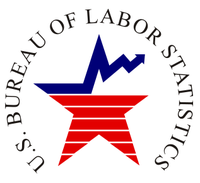
The U.S. economy added 156,000 jobs in September and unemployment was little changed at 5.0%, according to figures released this morning by the U.S. Bureau of Labor Statistics.
In response to the September jobs numbers, AFL-CIO Chief Economist William Spriggs said:
The yearlong steady unemployment rate of about 5.0% means that any slower growth and unemployment will rise. Stable prices and weak inflation pressure also mean, any slower growth might lead to deflation. So, there is no room for the Fed to raise interest rates at its November meeting.
Spriggs also tweeted:
Total nonfarm payroll up 156,000, below expectations, but continues record string of positive growth @AFLCIO can't afford Trump
— William E. Spriggs (@WSpriggs) October 7, 2016
Wage growth up a little, now 2.6% over the year; still below a target of 4% to reflect inflation and productivity growth @aflcio
— William E. Spriggs (@WSpriggs) October 7, 2016
Job numbers for August and July were adjusted to now reflect a net 7,000 number of fewer jobs than previously reported @aflcio #jobreport
— William E. Spriggs (@WSpriggs) October 7, 2016
Despite whining about the minimum wage, food services continues to add jobs--up 30,000 in September and 300,000 over the year @AFLCIO
— William E. Spriggs (@WSpriggs) October 7, 2016
Over the year, labor force participation is up from 62.4% to 62.9% continuing to show recovery @aflcio
— William E. Spriggs (@WSpriggs) October 7, 2016
Sign of improveing labor market for both men and women unemployed workers more likely to find jobs then quit looking https://t.co/BTP11iGNsp
— William E. Spriggs (@WSpriggs) October 7, 2016
Last month’s biggest job gains were in professional and business services employment (67,000), health care (33,000), food services and drinking places (30,000), and retail trade (22,000). Employment in other major industries, including mining, construction, manufacturing, wholesale trade, transportation and warehousing, information, financial activities, and government, changed little over the month.
Among the major worker groups, unemployment rates in September increased for Hispanics (6.4%), while the rates for adult men (4.7%), adult women (4.4%), teenagers (15.8%), whites (4.4%), blacks (8.3%), Asians (3.9%) were little changed.
The number of long-term unemployed (those jobless for 27 weeks or more) was down slightly in September and accounted for 24.9% of the unemployed.

